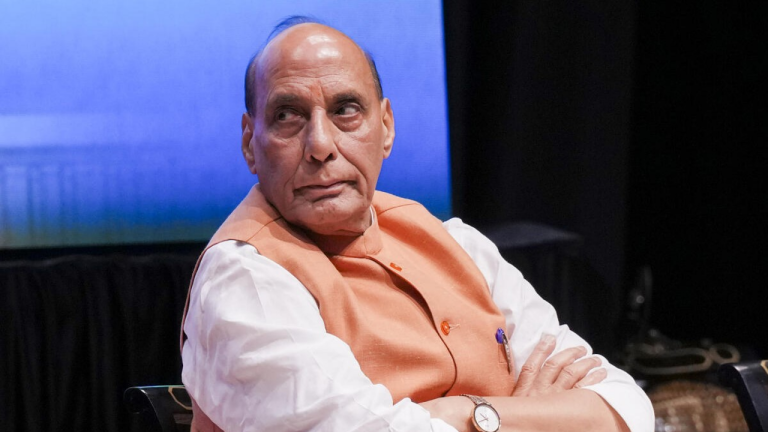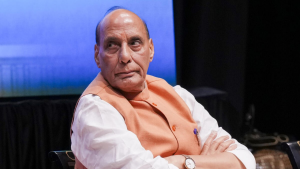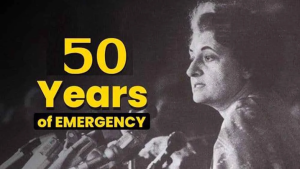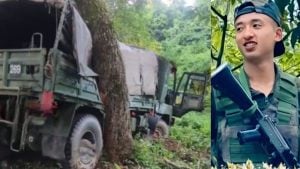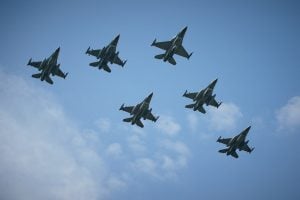India, Kazakhstan explore co-production and co-development of defence products
- India and Central Asia’s biggest state Kazakhstan are exploring widening defence partnership including joint production as well as opening a new chapter in the heavy engineering sector.
- Indian companies are in talks with Kazakhstan defence industries for co-production and co-development in defence production, according to a Ministry of Defence official. Sanjay Jaju, Joint Secretary (DIP), Ministry of Defence, said both India and Kazakhstan are looking at exploring opportunities that provide win-win solutions to the industries on both sides.
- Speaking at the inaugural of the India-Kazakhstan Defence Cooperation Expo, a two-day virtual expo jointly organized by FICCI and Ministry of Defence last week, Jaju said several Indian companies are already in talks with Kazakh defence industries for co-production and co-development in defence production.
- “India has come a long way in defence manufacturing. From a very paltry base, we now manufacture the entire range of equipment for all three verticals of the forces. These items range in the best in class artillery guns to battle tanks to bulletproof jackets to combat aircraft and the entire range of ships and submarines, missiles, and everything that is required in maintaining the sovereignty and defence of a nation,” Jaju said.
- Jaju said that the one important factor is not only to manufacture in India for India but also manufacture for all our friendly foreign nations. “We need to leverage opportunities on both sides and create opportunities not just for co-development and co-production but to also meet each other’s requirements,” he said.
- “I’m aware that some companies are in an active dialogue stage with the Kazakh establishment. With India’s strengths in software coupled with strengths in hardware manufacturing, India is poised to be one of the major electronics manufacturing hubs in the world. The defence military complex that we have in India has participation from both public and private sector companies,” he further added.
- Speaking at the event, Yerbol Bulakpaev, Head of Directorate, Department of Defence Production, Ministry of Industry and Infrastructure Development, Kazakhstan said that the number of priority areas highlighted by the two countries was recorded in the joint group meeting in 2018.
- “We hope to discuss the range of issues in the repair, maintenance and upgrade of the Military equipment, R&D and look to establish joint ventures. The country is interested in the joint production of aerospace equipment,” he said.
- On the roadmap for Development of Defence Industrial Cooperation and Indo-Kazakh military bilateral cooperation Bulakpaev said, “We are interested in cooperation in developing the robotised complex and land surveillance, and reconnaissance systems.”
- Addressing the inaugural session of the defence cooperation expo, Prabhat Kumar, Ambassador of India to Kazakhstan said, “As the Ambassador to the Republic of Kazakhstan, nothing gives me more pleasure than to see our bilateral cooperation progressing rapidly signifying the strong bonds of strategic partnerships that have been forged.”
- “The new agreement includes conduct of joint training, exercises, military-technical cooperation, UN Peacekeeping and exchange of intelligence. The strength of our robust bilateral defence cooperation can be gauged from the fact that a total of 246 officers from the Kazakh armed forces have been trained in India till date under the I-Tech defence program and we have a company level joint military exercise between both which is only done with select strategic partners,” Kumar said.
- Yerlan Alimbayev, Ambassador of Kazakhstan to India said that the bilateral relationship between the two countries is very stable. There are positive dynamics which once again confirm the status of strategic partnership between the two countries.
- “Striking example of high political trust between our countries is the joint peacekeeping activities within the framework of the UN mission in Lebanon which have additional impetus to the strengthening of the bilateral military cooperation,” Alimbayev said.
- Both countries have the potential for further development in the military-technical development field. In this context, the existing joint working group on military-technical cooperation is an effective platform for establishing joint projects in military-industrial enterprises. “I am hopeful for the active participation of the Indian defence companies in the next defence expo in Kazakhstan,” he added.
- Meanwhile on October 20 the Minister of Industry and Infrastructure Development of the Republic of Kazakhstan Beibut Atamkulov had a meeting with Indian delegation led by industrialist Sandeep Jajodia, Chairman and Founder of the Monnet Group.
- The Indian company plans to build a metallurgical plant for the production of ferrosilicon in the Pavlodar region of Kazakhstan, with a capacity of up to 15 thousand tons per year, with a subsequent increase in capacity to 50 thousand tons. The preliminary value of the investment is $50 million and is supposed to grow up to $200 million.
- The main products of the plant are export-oriented. The investment operator of the company is the “Kazakh Invest” National Company of the Ministry of Foreign Affairs of the Republic of Kazakhstan.
- Monnet Group was established in 1994 and the company’s business interests encompass setting up and operations of steel plants, manufacturing of sponge iron, pig iron and ferroalloys.
CNS Reviews Operational Readiness at Sea
- Admiral Karambir Singh, the Chief of the Naval Staff (CNS), reviewed the operational preparedness and combat-readiness of the Indian Navy’s principal combatants on 22 October 2020.
- CNS accompanied by Flag Officer Commanding-in-Chief Western Naval Command, Vice Admiral Ajit Kumar, arrived at Karwar Naval Base where he interacted with personnel and emphasised key issues of repairs, maintenance, spares support and operational logistics for afloat units to sharpen their war-fighting capabilities.
- He also reiterated aspects of cyber-security, force protection against terrorist attacks and asymmetric warfare and exhorted all personnel to maintain highest-level of alertness.
- Admiral Karambir Singh thereafter departed by helicopter to embark the Carrier Battle Group, comprising Vikramaditya, destroyers, frigates, corvettes, fleet support ships and integral swing-role fighters and helicopters. On embarking indigenous guided-missile destroyer Chennai, he was given an operational readiness briefing by the Fleet Commander, after which weapon firings, air-to-air combat operations, anti-submarine drills and fleet manoeuvres were demonstrated under realistic conditions. CNS thereafter embarked Fleet Support Ship Deepak to interact with the ship’s crew, followed by embarkation on aircraft carrier Vikramaditya, where he witnessed the Carrier Battle Group’s capabilities for integral fleet air defence and strike.
- Addressing the combatants of the Carrier Battle Group over broadcast from Vikramaditya, CNS complimented them for continuously maintaining peak combat-readiness and high tempo of operations over the past months, in spite of COVID-19 related challenges. The Indian Navy has remained mission-deployed and combat-ready across the IOR, even though rough seas during the monsoon period, towards maintaining the maritime security of the nation. He highlighted the nation’s appreciation for the Navy’s contributions in ‘Op Samudra Setu’ towards for repatriation of our distressed citizens from IOR countries and towards providing medical and logistics assistance to our friendly neighbours in the IOR, as part of ‘Mission SAGAR’. He expressed satisfaction at the high levels of motivation and reiterated that the Indian Navy has the best human capital manning our platforms.
- Giving an overview of the prevailing security situation, he stated that the Navy would continue maintaining a high-tempo of operations in coming months. He also complimented the Carrier Battle Group and its combatants for accurate and effective weapon firings, which left no doubt about the Navy’s readiness to meet any emergent contingencies.
- CNS highlighted that tri-service synergy and coordination has peaked with establishment of the Department of Military Affairs as was visibly demonstrated in the joint response of the three Services to recent events.
- CNS also advised continued compliance of protocols by naval personnel and their families, in regard to COVID-19 pandemic.
- CNS returned to Goa on completion of activities at sea and visited the Naval Aircraft Yard. He thereafter departed for New Delhi and was seen off by the Flag Officer Commanding – in – Chief West.
- Concurrent with CNS’s review of combat readiness on the Western seaboard, the Indian Navy’s Anti-Submarine Warfare (ASW) capability was further augmented by commissioning of ASW Corvette Kavaratti by General Manoj Mukund Naravane, Chief of the Army Staff, at Visakhapatnam, on the Eastern seaboard. Designed by the Indian Navy and built at Garden Reach Shipbuilders and Engineers Ltd, Kolkata, the ship is a fine example of Atmanirbhar Bharat.
- Indian Navy continues to maintain a high tempo of operations and combat-readiness despite the COVID-19 pandemic by adhering to stringent protocols onboard warships, submarines and aircraft squadrons and bases, and is fully prepared to tackle challenges in the maritime domain, in coordination with Sister Services.
Navy Operationalizes First Batch of Women Pilots
- The first batch of women pilots of Indian Navy have been operationalized on Dornier Aircraft by the Southern Naval Command (SNC) at Kochi. The three women pilots were part of the six pilots of the 27th Dornier Operational Flying Training (DOFT) Course, who graduated as ‘Fully operational Maritime Reconnaissance (MR) Pilots’ at a passing out ceremony held at INS Garuda, Kochi on 22 Oct 20.
- Rear Admiral Antony George, VSM, NM, Chief Staff Officer (Training) of SNC was the chief guest of the event and presented awards to the pilots who are now fully qualified on Dornier aircraft for all operational missions. The three women pilots of first batch are Lieutenant Divya Sharma (from Malviya Nagar, New Delhi), Lieutenant Shubhangi Swaroop (from Tilhar, Uttar Pradesh) and Lieutenant Shivangi (from Muzaffarpur, Bihar). These officers had initially undergone basic flying training partly with Indian Air Force and partly with the Navy prior to DOFT course. Amongst the three women pilots operationalized for MR flying, Lt Shivangi was the first to qualify as a naval pilot on 02 Dec 2019.
- The course comprised of one month of ground training phase, which was conducted at various professional schools of SNC and eight months of flying training at the Dornier Squadron of SNC, INAS 550. Lt Divya Sharma & Lt Shivam Pandey were adjudged ‘First in Flying’ and ‘First in Ground’ subjects, respectively. The Flag Officer Commanding-in-Chief (South) rolling trophy in memory of late Lt Simon George Pynomootil for the ‘Most spirited trainee’ was presented to Lt Kumar Vikram. This trophy was instituted on18 Jun 2019during the Diamond Jubilee Celebration of INAS 550 to immortalize the spirit of the officer who was a qualified Islander pilot and lost his life in a fatal air crash whilst serving the squadron on 17 May 1985.
India gifts a submarine to Myanmar, gains edge over China
- India’s provision of a submarine to Myanmar was a move that helped New Delhi get an edge over Beijing, which is seeking to push its military hardware among countries in the neighbourhood, people familiar with developments said on Wednesday.
- The 3,000 diesel-electric submarine INS Sindhuvir, which has been renamed UMS Minye Theinkhathu, was showcased during the Myanmar Navy’s Bandoola fleet exercise on October 15, the same day the external affairs ministry announced that India had gifted the submarine to the neighbouring country.
- “The Kilo-class submarine is an old design but it underwent extensive refits and upgrades before being handed over to Myanmar. It is significant that India handed over one of its submarines at a time when such vessels are needed to keep an eye on regional waters due to the increased activities of China’s People’s Liberation Army Navy,” said one of the people cited above, speaking on condition of anonymity.
- The move also coincides with growing concerns among some of India’s neighbours about the quality of Chinese military hardware, which is often offered on favourable terms and comes with lines of credit to back purchases.
- “There is a frequently used phrase in Myanmar – ‘tayokeset tayet-soke’ – which means ‘Chinese machine, broken in a day’. There are reports that Myanmar’s military leadership is unhappy with the quality of some Chinese equipment supplied to them and they have started diversifying their imports and looking towards India,” said a second person, who too didn’t wish to be identified.
- The discovery of Chinese-origin weaponry among militant groups in Myanmar, such as the Arakan Army, too has become a “source of annoyance” in some quarters, the people said.
- The people noted that two Ming-class Type 035G submarines sold by China to Bangladesh under a $200 million deal in 2017 were from the 1970s and had faced problems related to serviceability. There were also reports that two Chinese Type 053H3 frigates provided to Bangladesh in 2020 had faced problems with their navigation radar and weapons systems, the people said.
- In Nepal, flag carrier Nepal Airlines decided to ground two types of Chinese-origin aircraft –Y12e and MA60 – that were acquired through a government-to-government deal after concluding that they were unsuitable for the country’s terrain, the people added.
- Rajiv Bhatia, distinguished fellow for foreign policy studies at Gateway House and a former envoy to Myanmar, said New Delhi’s outreach to Naypyitaw, including the gifting of the submarine and a recent visit by foreign secretary Harsh Shringla and army chief General MM Naravane, was significant.
- “Myanmar is grappling with international opprobrium and lack of funds and the provision of the submarine helps them overcome both. The Chinese have been trying to do the same thing but this time, India beat them at the game. The visit, especially the army chief’s presence in the team, was a high-profile attempt to engage with all elements of Myanmar’s leadership,” he said.
India, Nigeria Sign Pact on Cooperation in Exploration of Outer Space
- The Union Cabinet was on Wednesday apprised of a Memorandum of Understanding (MoU) signed between India and Nigeria on cooperation in the exploration and uses of outer space for peaceful purposes.
- The MoU has been signed between Indian Space Research Organisation (at Bengaluru in June 2020) and the National Space Research and Development Agency (NASRDA) of Nigeria at Abuja (in August 2020)
- An official release said that the MoU will lead to setting up a joint working group, drawing members from Department of Space (DOS)/ISRO and National Space Research and Development Agency (NASRDA) of Nigeria, which will further work out the plan of action including the time-frame and the means of implementation.
- The release said India and Nigeria have been trying to have formal space cooperation for more than a decade.
- It said that with the initiatives from the Indian High Commission to Nigeria, a draft inter-Governmental MoU for space cooperation was shared with Nigerian authorities through the Ministry of External Affairs.
- “After a few iterations through diplomatic channels, both sides have arrived at a workable draft of the MoU and the same was processed for internal approvals. Though the approvals for signing the MoU was obtained in time, appropriate opportunities/occasions for the signing of this MoU have not arisen due to cancellation of a few visits in late 2019 and early 2020 and the subsequent COVID-19 pandemic situation,” the release said.
‘Theaterisation to take number of years,’ says army chief General Naravane
- Army chief General Manoj Mukund Naravane on Wednesday said the proposed creation of theatre commands to increase synergy among the three services would be a “deliberate and thoughtful” process and its fruition would take a “number of years”. He said “mid-course corrections” might be required along the way.
- His comments came during an address to officers and faculty at the Secunderabad-based College of Defence Management. The army chief spoke about a raft of issues including tri-service integration, theaterisation and modernisation of the armed forces.
- Theaterisation refers to placing specific units of the army, the navy and the air force under a Theatre Commander. Such commands will come under the operational control of an officer from any of the three services, depending on the function assigned to that command.
- As India’s first chief of defence staff, General Bipin Rawat’s mandate includes facilitating the restructuring of military commands for optimal utilisation of resources by bringing about so-called jointness in operations, including through establishment of theatre commands, in three years.
- On the government’s decision to appoint the CDS and create the department of military affairs (DMA), an army statement quoted Naravane as saying it was “a momentous” decision and that the services needed to “demonstrate great wisdom and statesmanship in enabling the CDS, a long-standing demand of the armed forces.”
- The next logical step in the process of defence reforms was the “formation of integrated theatre commands to synergise the capabilities and combat potential of the three services during war and peace,” the statement further quoted the army chief as saying.
- The statement said the army chief explained to the officers that there was a need for everyone to work in a spirit of togetherness and trust, with national security interests being paramount. Sounding a cautionary note, he said there might be a requirement for “mid-course corrections”.
- He was, however, optimistic about the future of the military’s integration, which he described as “an inevitability” as it would lead to “tri-services synergy” and optimisation of resources.
Pakistan using Chinese drones to recce Indian border areas
- Border Security Force (BSF) on Wednesday foiled Pakistan’s attempt to conduct recce of areas near the border with India using Chinese drones and opened fire on a drone spotted flying over Indian territory in the Gurdaspur sector.
- BSF deputy inspector general (DIG), Gurdaspur sector Rajesh Sharma informed that a patrolling party of BSF had spotted a drone that had arrived from Pakistan and was flying over the Indian territory. “Immediately, the jawans opened fire on the drone following which it flew back to Pakistan territory,” he said.
- In the past, Pakistan-based militants belonging to Khalistan Zindabad Force, with the help of ISI, had successfully dropped arms and ammunition in border villages of Amritsar and Tarn Taran. The investigations had revealed that as many as 8 sorties of drones were made from across the border in five days in August and September 2019. The National Investigation Agency had filed charges against nine militants in connection with arms dropping case. In January, Punjab police had also arrested an Army Naik who was allegedly involved in procuring and supplying drones to cross-border smugglers, besides training to fly them.
- Intelligence sources here informed that the Pakistan government had in recent past procured a large quantity of drones from China and they were now using them to carry out a recce on Indian border areas to airdrop arms, ammunition, and narcotics.
- “These drones fly at the height of around 300 to 400 meters and are not visible with naked eyes at that height. The drop locations are pre-fed into them and their coordinates are given to the recipients who can collect the contrabands from the exact position” said sources, adding that they were not sure whether Pak-based terrorist organizations had successfully made any arms or narcotics drop attempt in the recent past on Indian territory.
- “But with their continuous attempts, it seems they have intensified anti-India operations” said sources.
- DIG reluctantly informed that during last week Pak drones had crossed the Indian territory three to four times and every time they had fired upon the drones. He said they had lodged a protest with Pakistan Rangers, but they denied that the drone had originated from Pakistan territory.
China orders 121 more Russian helicopters
- China placed a new order with JSC Russian Helicopters for additional rotorcraft, the aerospace group Rostec said in its newly released annual report.
- According to the company’s annual report, earlier in 2019, JSC Russian Helicopters, a Rostec subsidiary, signed a record contract for the supply of new helicopters to China. The contract covers 121 new aircraft.
- Within the contract, awarded from the Chinese government and private structures, the company will supply 68 Mi-171 helicopters (including upgraded Mi-171E), 18 Mi-171Sh helicopters (military transport), 14 Mi-171 helicopters with a VK-2500 engine, 21 Ansat helicopters.
- A large part of ordered helicopters is intended for the needs of the People’s Liberation Army. It is worth mentioning that the first Chinese Mi-171SH helicopters were spotted in the report of the Chinese TV channel Phoenix news on the activities of the Ulan-Ude Aviation Plant.
US to sell air-to-ground missiles to Taiwan to help build defences against China
- The US government on Wednesday said it had approved the sale of $1 billion worth of advanced air-to-ground missiles to Taiwan as the island tries to shore up its defenses against China.
- The State Department said it had agreed to sell 135 of the precision-guided, air-launched AGM-84H SLAM-ER cruise missiles.
- Also approved was the sale of six MS-110 air reconnaissance pods and 11 M142 mobile light rocket launchers, taking the value of the three arms packages to $1.8 billion.
- The SLAM-ER missiles will help Taiwan “meet current and future threats as it provides all-weather, day and night, precision attack capabilities against both moving and stationary targets” on the ground or ocean surface, a statement said.
- Taiwan’s defense ministry said the weapons would help it “build credible combat capabilities and strengthen the development of asymmetric warfare”.
- The sales announced Wednesday did not include the MQ9 Reaper combat drones, which Taiwan has also reportedly requested.
- Democratic and self-ruled Taiwan lives under constant threat of invasion by authoritarian China, whose leaders view the island as part of their territory.
- They have vowed to one day seize the island, by force if necessary.
- China’s military defense spending dwarves Taipei’s and while the US does sell Taiwan weapons, it is not bound by a defense treaty as it is with Japan, South Korea and the Philippines.
- Beijing has ramped up diplomatic and military pressure on Taiwan since the 2016 election of President Tsai Ing-wen, who views the island as a de facto sovereign nation and not part of “one China”.
- The last year has seen a dramatic increase in incursions by Chinese fighter jets and bombers into Taiwan’s defense zone while state media has ramped up saber-rattling.
- Last week, Beijing released footage of a military exercise simulating an invasion of a Taiwan-like territory featuring missile strikes and amphibious landings.
- The PLA also recently released a propaganda video simulating an attack on Taiwan that included missile strikes on US military bases in Guam.
- While Taiwan has for decades fallen back on an implicit US security guarantee, Washington has urged it to strengthen its own capabilities to resist invasion.
- “Whether there’s an amphibious landing, a missile attack, a grey zone-type (hybrid) operation, they really need to fortify themselves,” President Donald Trump’s National Security Advisor Robert O’Brien said last week.
- “Taiwan needs to start looking at some asymmetric and anti-access area denial strategies… and really fortify itself in a manner that would deter the Chinese from any sort of amphibious invasion or even a grey zone operation against them,” he said.
- The previous three US administrations were wary of big-ticket arms deals with Taipei for fear of incurring Beijing’s wrath.
- President Trump has been much less squeamish about such sales, but his commitment to Taiwan’s defense has been called into question by his “America First” doctrine and on-again, off-again affection for Chinese leader Xi Jinping.
Iran unveils new version of air-defence missile system
- Iran has unveiled a new version of its local-made air-defense missile system during large-scale military exercise.
- For the first time, the new launcher of the Bavar-373 air-defense missile system was unveiled during the joint aerial maneuvers, codenamed Modafean Aseman Velayat 99. The joint air defense exercise is a large-scale military exercise covering more than half of the country’s territories. It was attended by air defense units from the Army and the Islamic Revolution Guards Corps (IRGC).
- Iran claims that the new Bavar-373 surface-to-air missile defense system is on par with the Russian S-400 system.
- According to media reports, Bavar-373 is a long-range road-mobile surface-to-air missile system officially rolled out in August 2019. Iran describes it as a competitor with the S-300 and S-400 missile systems.
- The latest version of Bavar-373 seems to be based on an 8×8 truck with two rectangular container launchers mounted at the rear of the chassis. Each container contains one Sayyad-4 missile. According to the Iranian defense industry, the Sayyad-4 has a range of 300 km and can reach an altitude of 27 kilometers. It is designed to intercept and destroy any types of aerial targets as wells as ballistic missiles.
QUICK REVIEW
- The first batch of women pilots of Indian Navy have been operationalized on which Aircraft by the Southern Naval Command (SNC) at Kochi?
- MiG 29
- Sukhoi Su-30
- Dornier
- P-8I Poseidon
ANSWER: C
- The three women pilots of first batch are
- Lieutenant Divya Sharma
- Lieutenant Shubhangi Swaroop
- Lieutenant Shivangi
- All the above
ANSWER: D
- India gifted which submarine to Myanmar on October 15?
- INS Sindhurakshak
- INS Sindhukirti
- INS Sindhuratna
- INS Sindhuvir
ANSWER: D
- The 3,000 diesel-electric submarine INS Sindhuvir, which has been renamed UMS Minye Theinkhathu, was showcased during the Myanmar Navy’s which fleet exercise on October 15?
- Bandoola
- IMNEX 2020
- Both 1 and 2
- Neither 1 nor 2
ANSWER: A
- An MoU has been signed between India and which African country on cooperation in the exploration and uses of outer space for peaceful purposes?
- Somalia
- Nigeria
- South Africa
- Djibouti
ANSWER: B
- The US State Department said it had agreed to sell which among these defence products to Taiwan to help build its defences against China?
- 135 AGM-84H SLAM-ER cruise missiles
- 6 MS-110 air reconnaissance pods
- 11 M142 mobile light rocket launchers
- All of the above
ANSWER: D
- Bavar-373 air-defense missile system was unveiled by which nation?
- Iran
- Iraq
- Pakistan
- Afghanistan
ANSWER: A





